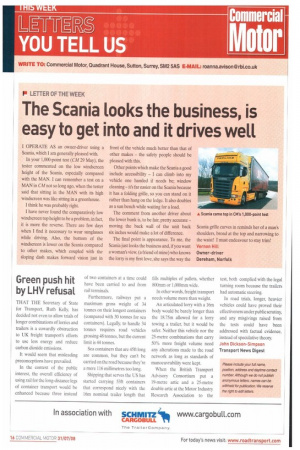Green push hit by LHV refusal
Page 16

If you've noticed an error in this article please click here to report it so we can fix it.
THAT THE Secretary of State for Transport, Ruth Kelly, has decided not even to allow trials of longer combinations of lorries and trailers is a cowardly obstruction to UK freight transport's efforts to use less energy and reduce carbon dioxide emissions.
It would seem that misleading preconceptions have prevailed.
In the context of the public interest, the overall efficiency of using rail for the long-distance legs of container transport would be enhanced because three instead of two containers at a time could have been carried to and from rail terminals.
Furthermore, railways put a maximum gross weight of 34 tonnes on their longest containers (compared with 30 tonnes for sea containers). Legally, to handle 34 tonnes requires road vehicles grossing 48 tonnes, but the current limit is 44 tonnes.
Sea containers that are 45ft long are common, but they can't be carried on the road because they're a mere 116 millimetres too long.
Shipping that serves the US has started carrying 53ft containers that correspond nicely with the 16m nominal trailer length that fills multiples of pallets, whether 800mm or 1,000mm wide.
In other words, freight transport needs volume more than weight.
An articulated lorry with a 16m body would be barely longer than the 18.75m allowed for a lorry towing a trailer, but it would be safer. Neither this vehicle nor the 25-metre combinations that carry 50% more freight volume need any alterations made to the road network as long as standards of manoeuvrability were kept.
When the British Transport Advisory Consortium put a 19-metre artic and a 25-metre double artic at the Motor Industry Research Association to the test, both complied with the legal turning room because the trailers had automatic steering.
In road trials, longer, heavier vehicles could have proved their effectiveness under public scrutiny, and any misgivings raised from the tests could have been addressed with factual evidence, instead of speculative theory. John Dickson-Simpson
Transport News Digest
































































































































































